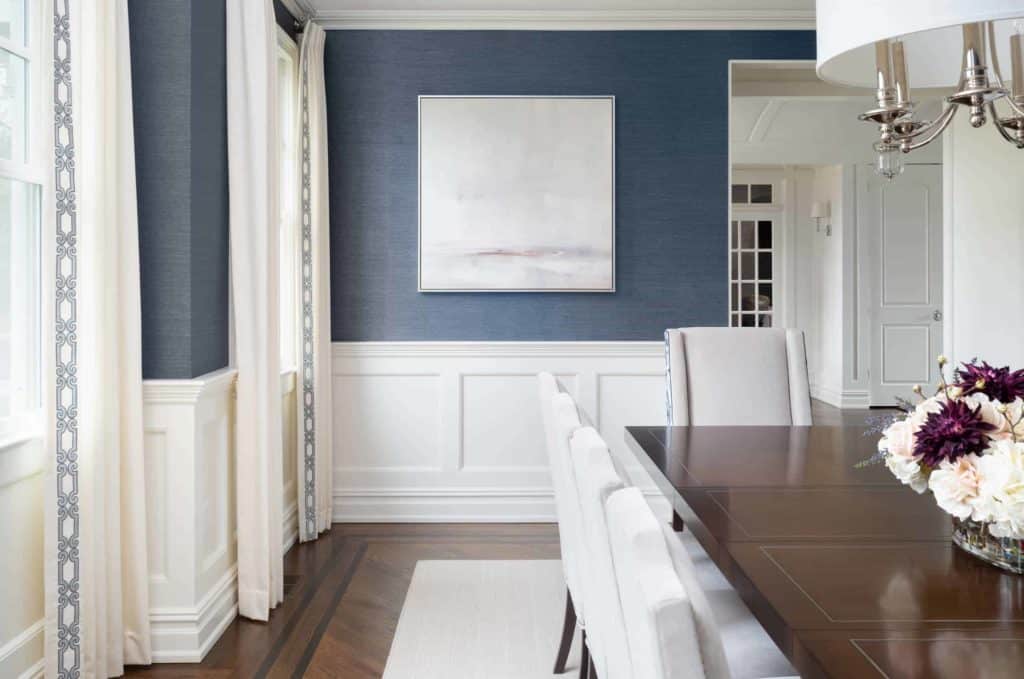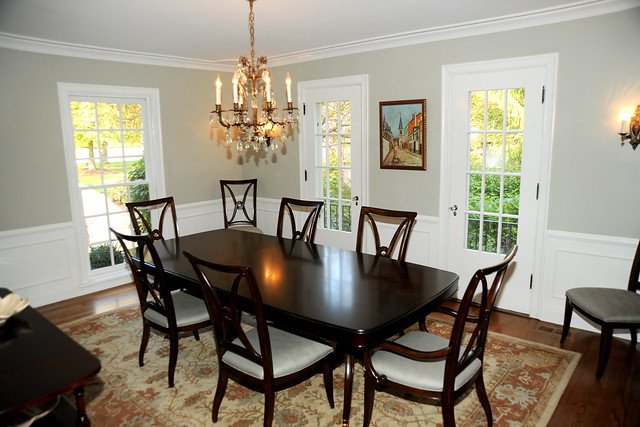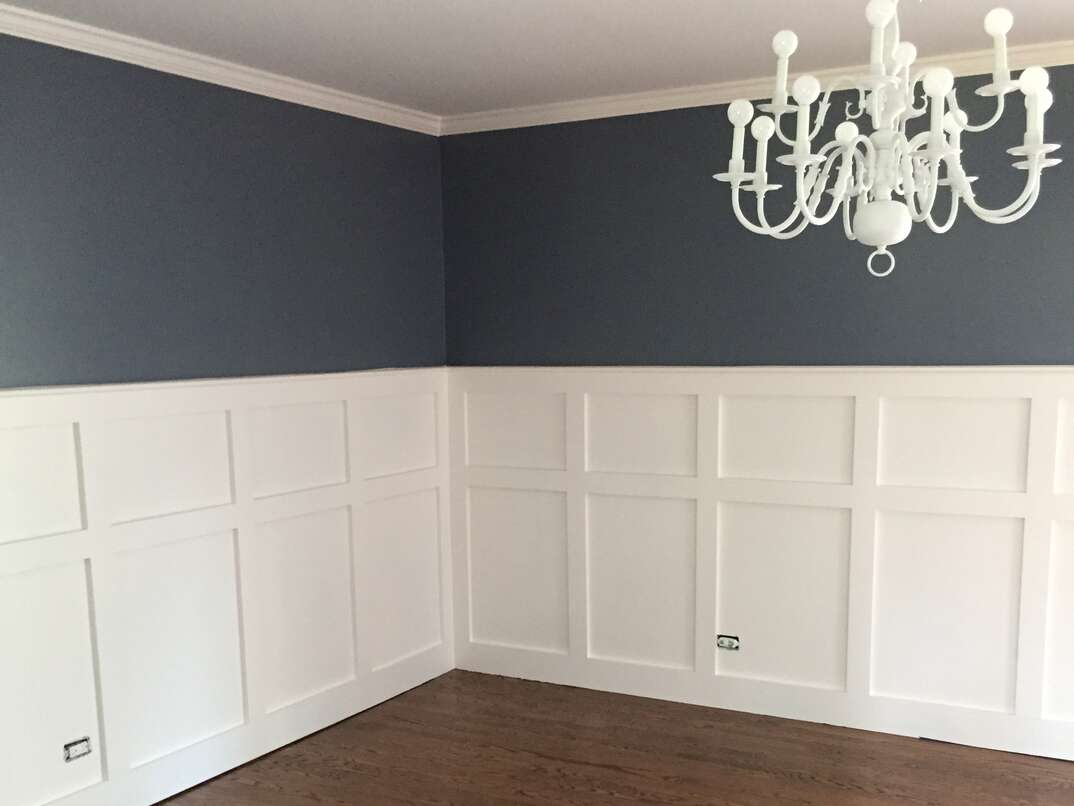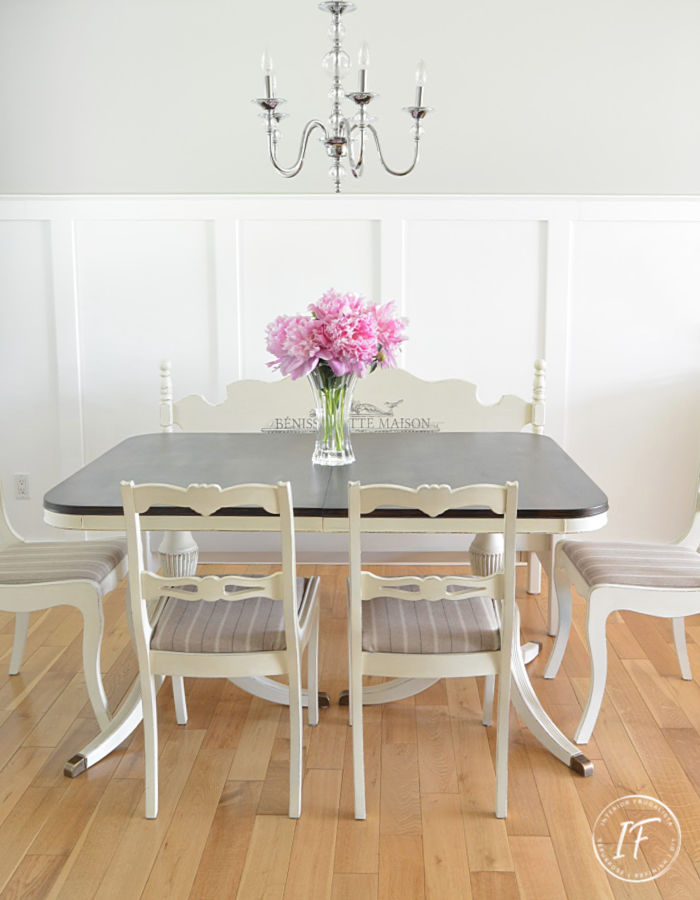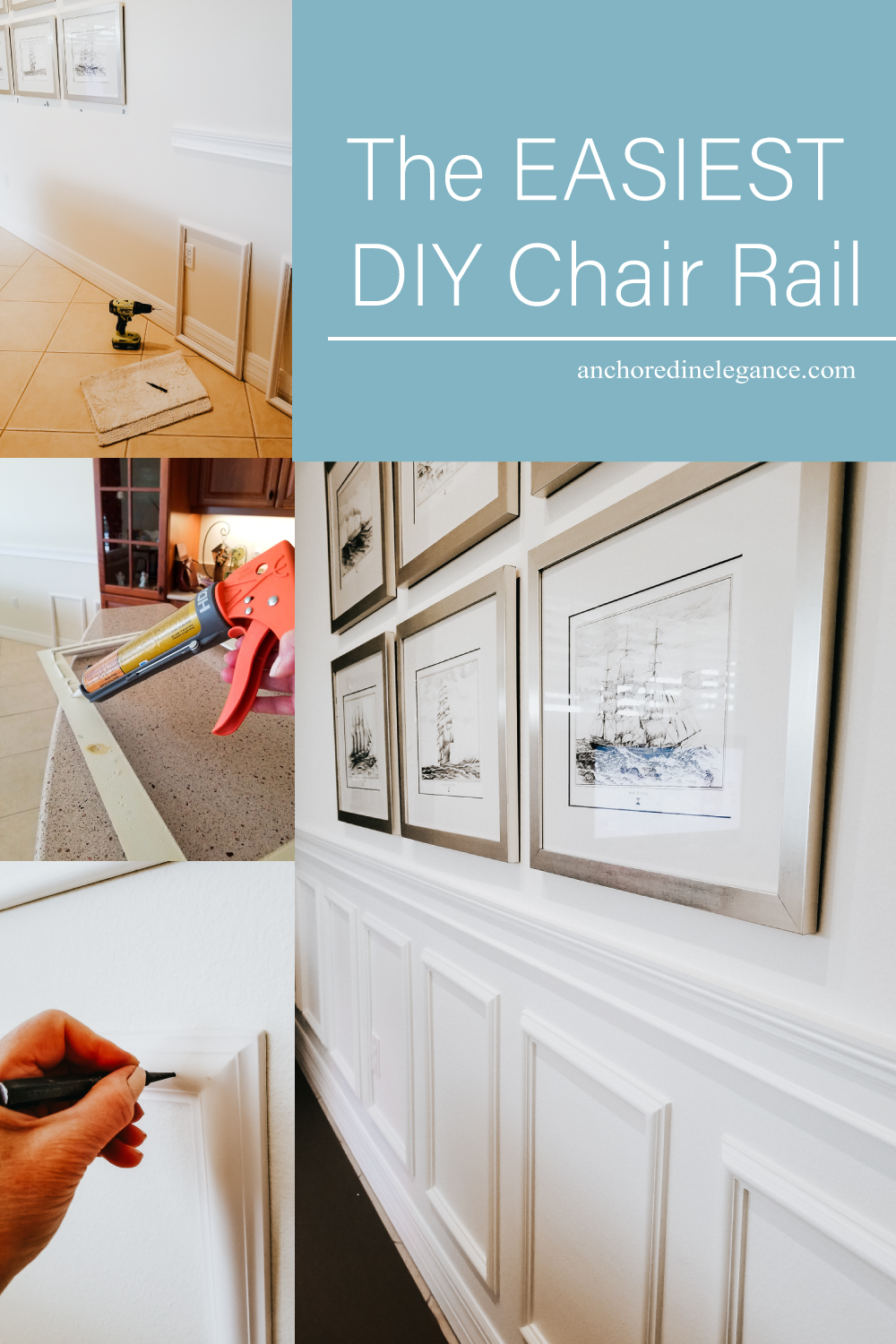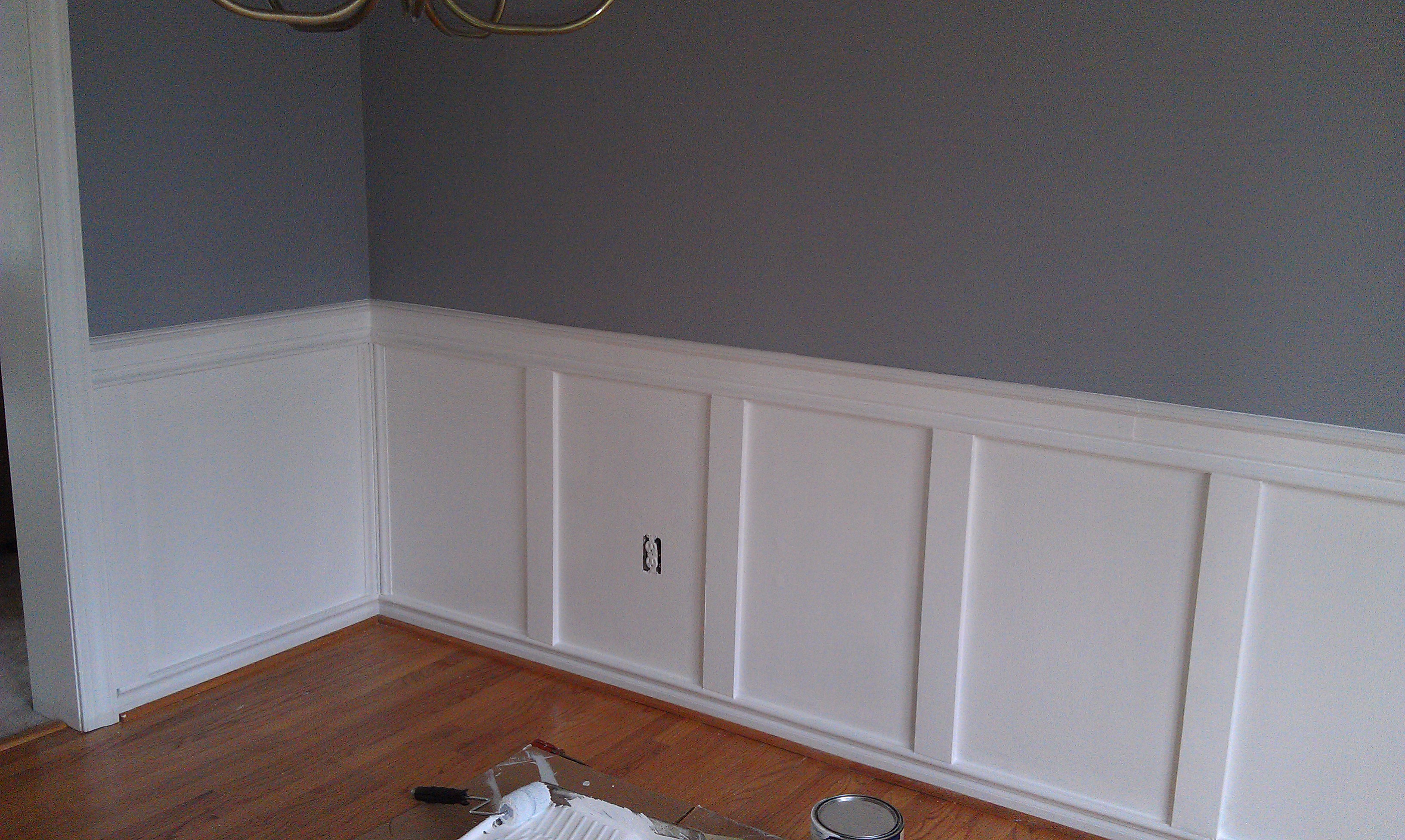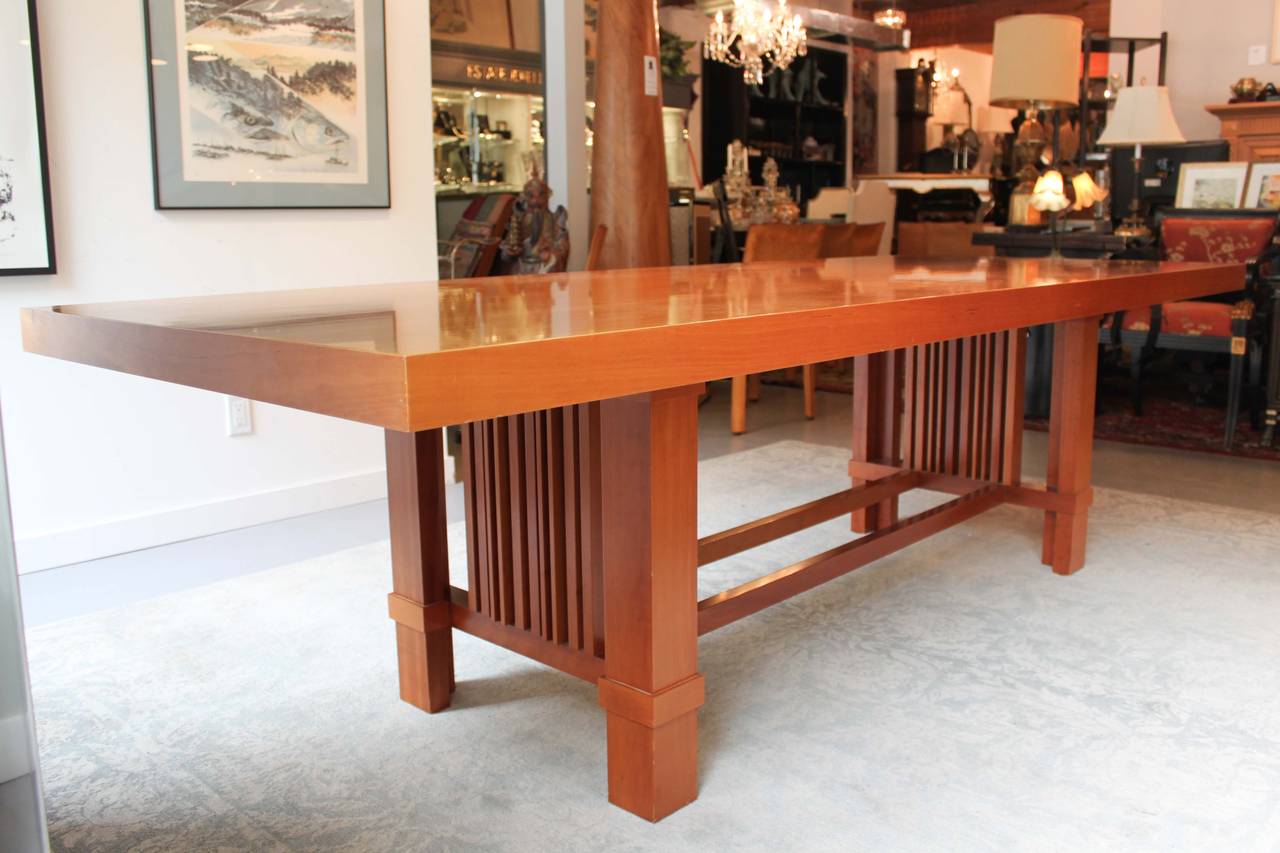If you're looking to add some character and charm to your dining room, wainscotting is the perfect solution. This decorative wall treatment adds texture and visual interest, making your dining room feel more elegant and sophisticated. Not sure where to start? Here are 10 wainscotting ideas to inspire your dining room makeover.Wainscotting Ideas for Your Dining Room
Installing wainscotting may seem like a daunting task, but with the right tools and materials, it can be a DIY project. First, measure the height and length of your walls to determine how much wainscotting you'll need. Then, choose your wainscotting style and materials. Follow the manufacturer's instructions for installation, or hire a professional for a flawless finish.How to Install Wainscotting in Your Dining Room
For a traditional and timeless look, consider classic wainscotting styles such as raised panel or beadboard. Raised panel wainscotting features a series of recessed panels, while beadboard has a series of vertical grooves. Both styles add dimension and elegance to a dining room.Wainscotting Styles for a Classic Dining Room
Wainscotting is typically painted in a contrasting color to the walls, creating a striking visual effect. For a classic look, opt for crisp white wainscotting against light grey or blue walls. If you want to make a statement, try a darker wainscotting color, such as navy blue or charcoal grey, against a light-colored wall.Wainscotting Color Ideas for Your Dining Room
Wainscotting can be made from a variety of materials, including wood, MDF, PVC, and even wallpaper. Wood wainscotting gives a more traditional and high-end look, while MDF and PVC are more budget-friendly options. Wallpaper wainscotting is a great choice for renters or those looking for a temporary makeover.Wainscotting Materials for a Dining Room Upgrade
Wainscotting and chair rail are both decorative wall treatments, but they serve different purposes. Wainscotting covers the lower portion of the wall, while chair rail is a horizontal trim that runs along the middle of the wall. Wainscotting is ideal for adding texture and style, while chair rail is great for protecting the wall from furniture.Wainscotting vs. Chair Rail: Which is Best for Your Dining Room?
If you're on a tight budget, you can still achieve a wainscotted look in your dining room. Consider using inexpensive materials such as MDF or PVC, and install the wainscotting yourself. You can also save money by painting the wainscotting yourself rather than hiring a professional painter.DIY Wainscotting for Your Dining Room on a Budget
The standard height for wainscotting in a dining room is between 30-36 inches from the floor. However, you can adjust the height based on your ceiling height and personal preference. Just make sure the wainscotting is proportionate to the rest of the room and doesn't overwhelm the space.Wainscotting Height Guide for Dining Rooms
If you want to add some character to your dining room but aren't a fan of traditional wainscotting, don't worry – there are plenty of alternatives. Consider using wallpaper with a wainscotting pattern, installing a chair rail with wallpaper below it, or using tile or stone for a more modern twist on wainscotting.Wainscotting Alternatives for a Unique Dining Room Look
To keep your wainscotting looking its best, it's important to maintain it properly. Regularly dusting and wiping down the wainscotting will help prevent buildup and maintain its appearance. If you have wood wainscotting, consider refinishing it every few years to keep it looking fresh.Wainscotting Maintenance Tips for Your Dining Room
The Beauty of Wainscoting in a Dining Room

Transform Your Dining Room into a Elegant Space
 When it comes to designing a dining room, there are endless options to choose from. From paint colors to furniture styles, the possibilities are endless. However, one element that can truly elevate the look and feel of a dining room is wainscoting.
Wainscoting, also known as paneling, is a decorative wall treatment that consists of wood panels usually placed on the lower half of a wall. It adds depth, texture, and visual interest to a room, making it an ideal choice for a dining room.
The Benefits of Wainscoting
Not only does wainscoting add a touch of elegance to a dining room, but it also has practical benefits. The panels can protect your walls from scuffs, scratches, and other wear and tear. This is especially useful in a dining room where chairs are constantly being moved around. Additionally, wainscoting can also help with soundproofing and insulation, making your dining room a more comfortable and intimate space.
Design Options
Wainscoting comes in a variety of styles, materials, and colors, allowing you to customize the look of your dining room according to your personal taste. For a traditional and classic look, opt for raised panel wainscoting with intricate detailing. If you prefer a more modern and sleek aesthetic, choose flat panel wainscoting in a neutral color.
Coordinating with the Rest of Your Dining Room
When considering wainscoting for your dining room, it is important to think about how it will coordinate with the rest of the space. You can choose to paint the wainscoting the same color as your walls for a seamless look, or go bold and use a contrasting color to make a statement. It is also important to consider the style and color of your dining table and chairs when choosing the wainscoting design and color.
Final Thoughts
Wainscoting is a timeless and versatile design element that can add charm and sophistication to any dining room. With its practical benefits and endless design options, it is a great way to transform your dining room into a beautiful and inviting space. So why not consider adding wainscoting to your dining room and enjoy the many benefits it has to offer.
When it comes to designing a dining room, there are endless options to choose from. From paint colors to furniture styles, the possibilities are endless. However, one element that can truly elevate the look and feel of a dining room is wainscoting.
Wainscoting, also known as paneling, is a decorative wall treatment that consists of wood panels usually placed on the lower half of a wall. It adds depth, texture, and visual interest to a room, making it an ideal choice for a dining room.
The Benefits of Wainscoting
Not only does wainscoting add a touch of elegance to a dining room, but it also has practical benefits. The panels can protect your walls from scuffs, scratches, and other wear and tear. This is especially useful in a dining room where chairs are constantly being moved around. Additionally, wainscoting can also help with soundproofing and insulation, making your dining room a more comfortable and intimate space.
Design Options
Wainscoting comes in a variety of styles, materials, and colors, allowing you to customize the look of your dining room according to your personal taste. For a traditional and classic look, opt for raised panel wainscoting with intricate detailing. If you prefer a more modern and sleek aesthetic, choose flat panel wainscoting in a neutral color.
Coordinating with the Rest of Your Dining Room
When considering wainscoting for your dining room, it is important to think about how it will coordinate with the rest of the space. You can choose to paint the wainscoting the same color as your walls for a seamless look, or go bold and use a contrasting color to make a statement. It is also important to consider the style and color of your dining table and chairs when choosing the wainscoting design and color.
Final Thoughts
Wainscoting is a timeless and versatile design element that can add charm and sophistication to any dining room. With its practical benefits and endless design options, it is a great way to transform your dining room into a beautiful and inviting space. So why not consider adding wainscoting to your dining room and enjoy the many benefits it has to offer.



